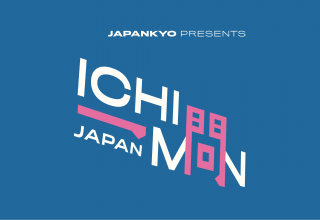
Today’s Question
On this episode of Ichimon Japan we ask: How do you create fake kanji?
Topics Discussed
- Kanji radicals
- The composition of kanji
- Kanji reading strategies
- The “Original Kanji Contest” (Sōsaku Kanji Kontesuto)
- What yūrei-moji (ghost kanji/characters) are
- Why the kanji character for rice (米) is used to mean “meter” in Japanese
- The kanji based system used for measurements (metric and Imperial)
- What kokuji (国字) are
- What “made in Japan kanji” (和製漢字, wasei kanji) are
- Some of our favorite kanji made in Japan
- The fabulous dolphin-like creature that is Shachihoko
- How to write gomi (trash, garbage) in kanji
- The many ways you can write “sleigh” in kanji
- And more!
Listen to Ichimon Japan on
Apple Podcasts Google Podcasts Stitcher Spotify iHeartRadio PodBean Tunein RSS
Support on Patreon
If you enjoy Ichimon Japan and want to ensure that we’re able to produce more episodes, then please consider becoming a patron on Patreon.com. For a minimum pledge of $2 a month you’ll get access to exclusive content and our eternal, profound, and undrying gratitude.
Sources, Links, Videos, Etc.
If you would like to learn more about kanji radicals, one good place to start might be the Wikipedia page linked below.
The 23 kanji radicals below are the ones mentioned by Christine in this episode. The on-yomi (Chinese reading) of a jōyō kanji will always have the same reading. The on-yomi for each of these radicals is provided as well.
- 長 chō
- 義 gi
- 亢 kō
- 章 shō
- 尞 ryō
- 曹 sō
- 巨 kyo
- 𢦏 sai
- 冓 kō
- 㐮 jō
- 旨 shi
- 氐 tei
- 呉 go
- 求 kyū
- 兪 yu
- 麻 ma
- 五 go
- 侵 shin
- 奴 do
- 喿 sō
- 喿 sō
- 及 kyu
- 賁 fun
- 旦 tan
The list above is from the article below. If you are interested in learning more bout which kanji radicals have more or less readings, then the article is definitely worth a look.
The Japan Times article on “ghost kanji” (yūrei-moji ) that was mentioned in this episode can be accessed via the link below.
The kanji that Christine gives as an example of a ghost kanj can be seen below.
- 妛: According to the Japan Times, some dictionaries give akebi as the reading of this character. However, it is believed that this character was accidentally created as a result of a mistake when creating computer fonts in the 1970s. This character (妛) is thought to derive from the real character 𡚴, which can be found in 𡚴原 (Akenbara), a name used for a small district in Shiga Prefecture. The extra horizontal line in the ghost kanji is believed to have been caused by a photocopying error.
The website for the “Original Kanji Contest” (Sōsaku Kanji Kontesuto) can be accessed via the link below.
The kanji for bookmark that Christine mentions during the discussion can be seen below. Although similar to the actual kanji for shiori (栞), which means “bookmark,” this kanji features the kanji for book (本) instead of the kanji/radical for tree (木) at the bottom. In the bottom right of this screenshot it says that the Japanese reading (kun-yomi) for this kanji is shiori or bukkumāku (in other words, it means bookmark).

And here is one more of the original kanji created for the Sōsaku Kanji Contest. This one is a kanji that is intended to mean “tissue.” The Japanese reading (kun-yomi) is tisshu. The kanji was designed to look like a box of tissues with tissues inside and coming out the top.

To look at the full list of made in Japan kanji/kokuji, check out the page linked to below.
To listen to the latest episode of Japan Station, use the link below.
Japanese Vocabulary List
Most episodes feature at least one or two interesting Japanese words or phrases. Here’s some of the ones that came up on this episode. All information is from Jim Breen’s WWWJDIC.
- Bushu
- 部首 【ぶしゅ】 (n) radical (of a kanji character)
- Tōge
- 峠 【とうげ】 (n,n-suf) (1) (mountain) pass; ridge; peak; (n) (2) peak (e.g. of summer); worst (e.g. of an illness); crisis; critical point; most difficult part
- Sori
- 轌 : 橇; 轌 【そり; ソリ】 (n) (uk) sleigh; sled; sledge
- Shachihoko
- 鯱 : 鯱; 鯱鉾 【しゃちほこ; しゃっちょこ(鯱); さちほこ(鯱)】 (n) mythical carp with the head of a lion and the body of a fish (auspicious protectors of well-being); 【しゃち; シャチ】 ; (n) (1) (uk) orca (Orcinus orca); killer whale; grampus; (2) (しゃち only) (abbr) (See 鯱・しゃちほこ) mythical carp with the head of a lion and the body of a fish (auspicious protectors of well-being); ED Name(s): 【しゃちほこ】 (s) Shachihoko
- Konoshiro
- 鮗 【このしろ; コノシロ】 (n) (uk) konoshiro gizzard shad (Konosirus punctatus)
- Ebi
- エビ : 海老(P); 蝦; 蛯; 鰕 【えび(P); エビ(P)】 (n) prawn; shrimp; lobster; crayfish
- Hataraku
- 働く 【はたらく】 (v5k,vi) (1) to work; to labor; to labour; (2) to function; to operate; to be effective; to work (i.e. … works); to come into play; (3) to commit (e.g. a crime); to perpetrate; to do; to act; to practise; to practice; (4) {ling} to be conjugated
- Heibei
- 平米 【へいべい】 (n) square metre; square meter
We Want Your Questions
Is there something about Japan that confuses you? Is there something about Japanese culture that you would like to learn more about? Is there something in Japanese history that you would like us to explain? We’re always looking for new questions about Japan to answer, so if you have one, please send it to ichimon@japankyo.com.
Special Thanks
Opening/Closing Theme: Produced by Apol (YouTube, Twitter, Facebook, Fiverr)
Ichimon Japan cover art: Produced by Erik R.
Follow Japankyo on Social Media
Full Show Notes

















